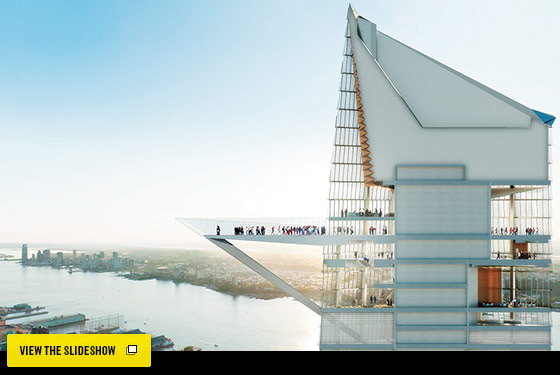 |
On a Friday afternoon in September, a conclave of architects and real-estate executives gathers in a hotel conference room to look over plans for Manhattan’s largest remaining chunk of emptiness. Hudson Yards, the railroad depot that stretches from Tenth Avenue to the Hudson River, and from 30th to 33rd Street, barely registers on the mental map of most New Yorkers. Look down from a neighboring window, and you see only a pit full of trains hazed with their diesel fumes. The planners’ view, though, takes in sugarplum dreams of the city’s shiny next wing: an $800 million concrete roof over the yards, and above it the country’s largest and densest real-estate development: 12 million square feet of offices, shops, movie theaters, gyms, hotel rooms, museum galleries, and open space, and 5,000 apartments, all packed into 26 acres. In the first, $6 billion phase—scheduled for completion by late 2017—the tallest tower will top the Empire State Building, and even the shortest will have a penthouse on the 75th floor.
The people in the conference room can visualize that future in high-resolution detail. On the screen, digital couples stroll among trees pruned to cubical perfection. A chain of glowing towers garlands the skyline, and tiny figures stroll onto a deck hanging nearly a quarter-mile in the air. Architects discuss access points, sidewalk widths, ceiling heights, flower beds, and the qualities of crushed-stone pathways. You could almost forget that none of this exists yet—until one architect points to a lozenge-shaped skyscraper and casually, with a twist of his wrist, remarks that he’s thinking of swiveling it 90 degrees.
The Related Companies, the main developer of the site, has called this meeting so that the designers of the various buildings can finally talk to each other, instead of just to the client. I’m getting the first look at the details at the same time some of the participants are. Suddenly, after years of desultory negotiations and leisurely design, the project has acquired urgency: Ground-breaking on the first tower will take place in the coming weeks. There’s a high-octane crew in the room: William Pedersen, co-founder of the high-rise titans Kohn Pedersen Fox Associates; David Childs, partner at the juggernaut Skidmore Owings and Merrill; Elizabeth Diller, front woman for the cerebral boutique Diller Scofidio + Renfro; David Rockwell, a virtuoso of showbiz and restaurant design; Howard Elkus, from the high-end shopping-center specialists Elkus Manfredi; and landscape architect Thomas Woltz, the only member of the group new to New York real-estate politics. Their task is to compose a neighborhood from scratch.
The success of Hudson Yards depends on the question: Can a private developer manufacture a complete and authentic high-rise neighborhood in a desolate part of New York? “This isn’t just a project; it’s an extension of the city,” says Stephen Ross, Related’s founder and chairman. New York has always grown in nibbles and crumbs, and only occasionally in such great whale-gulps of real estate. In the richest, most layered sections of the city, each generation’s new buildings spring up among clumps of older ones, so that freshness and tradition coexist. A project of this magnitude, concocted around a conference table, could easily turn out to be a catastrophe. The centrally planned district has its success stories—most famously, Rockefeller Center. Coordinated frenzies of building also produced Park Avenue, Battery Park City, and the current incarnation of Times Square. But this enterprise is even more ambitious than any of those, and more potentially transformative than the ongoing saga of the World Trade Center. New York has no precedent for such a dense and complex neighborhood, covering such a vast range of uses, built in one go.
That makes this Ross’s baby. Hundreds of architects, engineers, consultants, planners, and construction workers will contribute to the finished product. Oxford Properties Group has partnered with Related, and the city dictated much of the basic arrangement. But in the end, how tightly the new superblocks are woven into the city fabric, how organic their feel, and how bright their allure will depend on the judgment and taste of a billionaire whose aesthetic ambitions match the site’s expanse, and who slips almost unconsciously from we to I. “We went out and selected great architects and then created a whole five-acre plaza,” Ross says. “People will have never seen such a world-class landscaping project. I can’t tell you what that plaza will look like, but what I visualize is a modern-day Trevi Fountain. It’s going to be classical and unique.”
The best clue to what he has in mind isn’t in Rome, but at Columbus Circle. Ross lives and works in the Time Warner Center, which Related built, and if you imagine the complex blown out to five times its size, you begin to get a sense of what’s coming at Hudson Yards: crowds flowing from home to boutique, hotel to subway, office to spa, concert to restaurant—and all that activity threaded around and through a curving plaza equipped with fountains and a very tall monument, as yet unchosen. The Time Warner Center brought profitable liveliness to Columbus Circle, the once moribund, now vibrant hinge between midtown and the Upper West Side. But massive as it is, the Time Warner Center is dainty by comparison.




 The Beauty of Designing With a Spouse
The Beauty of Designing With a Spouse

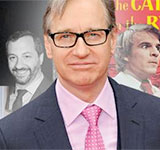 Paul Feig on His Influences
Paul Feig on His Influences  Three Courses of Orson Welles
Three Courses of Orson Welles
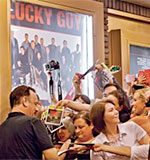 Tom Hanks Appreciators at Lucky Guy
Tom Hanks Appreciators at Lucky Guy
 Fashionables: The Gladiator Sandal
Fashionables: The Gladiator Sandal
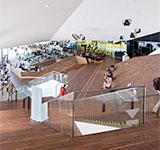 The Urbanist’s Amsterdam
The Urbanist’s Amsterdam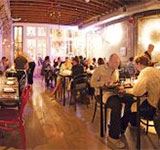 Adam Platt on ABC Cocina
Adam Platt on ABC Cocina Clams: Shucking, Buying, and Dining Out
Clams: Shucking, Buying, and Dining Out Best Doctors 2013
Best Doctors 2013 The Bossless Office Trend
The Bossless Office Trend
 Nelson Castro in the Machine
Nelson Castro in the Machine
 The World of Black-Ops Reputation Management
The World of Black-Ops Reputation Management


Join the Discussion
Read All Comments | Add Yours
Recent Comments On This Article